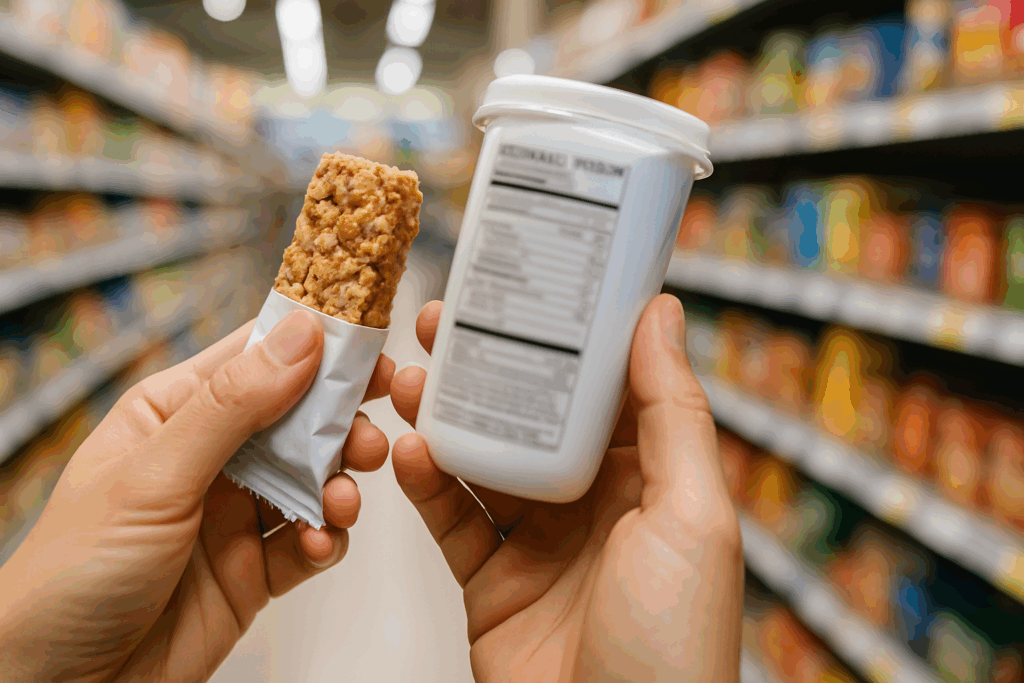In today’s health-conscious world, understanding the concept of a calorie allowance is more important than ever. Whether you are aiming to lose weight, gain muscle, or simply maintain a healthy lifestyle, knowing how many calories your body needs each day can serve as a powerful tool for making informed dietary decisions. Yet, despite its relevance, the calorie allowance meaning is often misunderstood or oversimplified. This article provides an in-depth exploration of what calorie allowance truly means, how it varies across individuals, and how you can apply this knowledge to enhance your nutritional well-being and overall health.
You may also like: 4 Ways to Have a Healthy Diet: Expert Tips Backed by Science for Better Nutrition and Long-Term Wellness
Defining Calorie Allowance: More Than Just a Number
At its core, the calorie allowance definition refers to the number of calories a person can consume daily to maintain, lose, or gain weight, depending on their specific health and fitness goals. While this might sound straightforward, the underlying science is layered with biological, behavioral, and environmental factors. A calorie, as defined in nutritional terms, is a unit of energy. Your body uses calories to perform everything from breathing and digestion to walking and thinking. Therefore, understanding your calorie allowance value definition means recognizing the total energy your body needs to function properly each day.
The calorie allowance definition in foods becomes particularly relevant when assessing the nutritional value of what you eat. Each food item contributes to your daily calorie intake, and not all calories are created equal. Calories from nutrient-dense foods such as leafy greens, lean proteins, and whole grains support bodily functions more effectively than those from highly processed items high in sugar or trans fats. When we explore the calorie allowance simple define approach, it refers to this basic concept: balancing the energy you consume with the energy you expend in a way that supports your health goals.
Normal Calorie Needs: What Is the Normal kcal per Day?
A common question many people ask is what constitutes the normal kcal per day. While general dietary guidelines often suggest around 2,000 calories per day for adults, this figure is only a starting point. The actual number varies based on age, sex, weight, height, physical activity level, and individual metabolism. For instance, athletes or individuals with physically demanding jobs may require significantly more energy, while sedentary individuals may need fewer calories to avoid weight gain.
To gain a better understanding of normal kcal per day, consider how the body uses energy. Basal metabolic rate (BMR) represents the calories your body requires at rest to maintain essential physiological functions. When combined with calories burned through physical activity and the thermic effect of food (energy used for digestion), you arrive at your total daily energy expenditure (TDEE). Calculating your TDEE provides a personalized view of your calorie allowance, helping you to align your nutritional intake with your actual energy requirements.

Age and Gender-Specific Needs: How Many Calories for a 35 Year Old Woman?
Age and gender are two critical factors that influence your calorie allowance. A frequently searched topic is how many calories for a 35 year old woman are considered healthy. For women in their mid-thirties, daily calorie needs typically range between 1,800 and 2,400 depending on lifestyle factors. A sedentary woman may require closer to 1,800 calories, while an active woman engaging in regular exercise may need upwards of 2,200 to 2,400 calories daily to support her energy expenditure.
Understanding the healthy calorie intake for a 35 year old woman involves more than just meeting caloric requirements. Nutrient quality is equally important. Protein, healthy fats, complex carbohydrates, fiber, and essential vitamins and minerals must be distributed across those calories to promote long-term wellness. During this stage of life, hormonal changes, potential shifts in metabolism, and lifestyle transitions can influence how the body uses energy, making a tailored approach to calorie allowance even more vital.

The Role of Macronutrients in Caloric Balance
Calories are derived from macronutrients—carbohydrates, proteins, and fats—each providing different amounts of energy per gram. Carbohydrates and proteins each supply 4 calories per gram, while fats offer 9 calories per gram. Understanding how these macronutrients contribute to your daily calorie allowance value definition allows for more precise control over your dietary choices. A diet too heavy in fats, even healthy ones, can quickly exceed your calorie budget, while a protein-rich diet can support muscle maintenance and satiety, particularly during weight loss efforts.
Balancing macronutrients according to your personal goals can significantly influence how your body responds to your diet. For instance, individuals aiming for fat loss may benefit from a higher protein intake to preserve lean muscle mass, while endurance athletes might require a greater proportion of carbohydrates to sustain performance. A well-structured calorie allowance definition considers not only how much energy you consume but also where that energy comes from.
Calorie Allowance in Context: Behavioral and Environmental Influences
Understanding the calorie allowance meaning goes beyond math and biology; it also involves behavioral patterns and environmental influences. Factors such as emotional eating, stress, social pressures, and marketing tactics can all affect how and when we consume calories. For example, people often underestimate portion sizes or overlook “hidden” calories in condiments, beverages, and cooking oils. Recognizing these subtleties can make a meaningful difference in how effectively you manage your calorie intake.
Environmental elements, such as food availability, cultural norms, and socioeconomic status, further shape eating habits. Someone living in a food desert with limited access to fresh produce will face different challenges compared to someone with abundant access to health-conscious grocery stores. This variation makes it even more essential to define and adapt one’s calorie allowance within the context of their real-world circumstances, rather than relying on generic figures.

Understanding Labels: The Calorie Allowance Definition in Foods
Food labels are a crucial tool for anyone trying to manage their calorie intake. The calorie allowance definition in foods refers to the amount of energy each serving of a product contributes to your daily calorie limit. By understanding how to read these labels, consumers can make informed decisions that align with their nutritional goals. Labels typically include information on serving size, total calories, and calories from fat, as well as macronutrient and micronutrient content.
Learning to evaluate this information in light of your own calorie allowance simple define goals can help prevent overconsumption and support healthier eating habits. For example, a food item might appear low in calories per serving, but if the actual portion consumed is double or triple the serving size listed, the calorie count rises significantly. This discrepancy often leads to accidental overconsumption, which can derail health goals if not properly accounted for.
Practical Strategies for Managing Your Daily Calorie Allowance
Effectively managing your daily calorie allowance requires a combination of planning, awareness, and flexibility. One practical strategy is to keep a food journal, either in a notebook or via an app, to track your daily intake. This habit not only reveals patterns and areas for improvement but also increases accountability. Another approach is meal prepping, which helps regulate portion sizes and ensures that nutritious, balanced meals are readily available.
Mindful eating practices also contribute significantly to managing calorie intake. Paying attention to hunger and satiety cues, eating without distractions, and savoring your food can lead to a more satisfying and controlled eating experience. Additionally, learning to navigate social settings and restaurant meals while staying within your calorie allowance can be empowering, enabling long-term adherence to healthy eating habits without feeling restricted or deprived.

Adapting Calorie Allowance Across Life Stages and Health Conditions
Your calorie allowance is not a static figure—it evolves throughout your life and in response to your health status. During childhood and adolescence, higher calorie needs support rapid growth and development. Pregnancy and lactation require additional calories to nourish both the mother and the developing baby. Conversely, as people age, their metabolic rate often declines, reducing their daily calorie needs. Understanding how your calorie allowance shifts across these life stages can help you adjust your nutrition proactively.
In cases of specific health conditions, such as thyroid disorders, diabetes, or cardiovascular disease, calorie needs and nutrient distribution may change. For example, someone with hypothyroidism may experience a reduced metabolic rate, requiring adjustments to prevent weight gain. Working with a registered dietitian or healthcare provider can help tailor your calorie allowance to your unique medical profile, ensuring nutritional adequacy and supporting treatment outcomes.
Clarifying Common Misconceptions About Calorie Intake
There are many persistent myths surrounding the calorie allowance meaning, and debunking them is essential for promoting evidence-based understanding. One common misconception is that all calories are equal regardless of source. While it is true that a calorie is a unit of energy, the source of that calorie profoundly influences metabolism, satiety, and overall health. For example, 200 calories from a sugary soda have vastly different effects compared to 200 calories from a vegetable and lean protein stir-fry.
Another myth is that severely restricting calories leads to faster weight loss. While initial weight loss may occur, extreme restriction can lower metabolic rate, cause nutrient deficiencies, and promote muscle loss. Such outcomes undermine long-term health and are difficult to sustain. Understanding the healthy calorie intake for a 35 year old woman or any other demographic requires a focus on balance, not deprivation. A sound calorie allowance strategy prioritizes quality, sustainability, and health outcomes over quick fixes.
Using Technology to Personalize and Monitor Caloric Intake
Modern technology has made it easier than ever to calculate and monitor your calorie allowance with precision. Smartphone apps and wearable devices can estimate your TDEE, track food intake, and even provide insights into nutrient balance. These tools empower users with real-time feedback, facilitating more informed dietary choices and improving adherence to calorie goals.
While technology can be a valuable aid, it is not without limitations. Algorithms used in calorie-tracking apps are based on averages and may not account for individual variability in metabolism or activity levels. Therefore, it is important to use these tools as guides rather than absolutes. Combining technology with self-awareness and professional guidance creates a more holistic approach to understanding and applying the calorie allowance value definition in daily life.
Building a Sustainable Relationship with Food and Calories
Perhaps the most important aspect of understanding your calorie allowance is using it to cultivate a positive, sustainable relationship with food. Viewing calories not as enemies but as essential units of energy shifts the focus from restriction to nourishment. This mindset encourages balanced eating patterns and long-term wellness, rather than yo-yo dieting or disordered eating behaviors.
Education and self-compassion play critical roles in this transformation. By learning the calorie allowance meaning in the context of your unique body and lifestyle, you become better equipped to make choices that support not just your physical health but also your emotional and psychological well-being. Ultimately, a healthy calorie allowance is one that aligns with your goals, honors your body’s needs, and evolves as you do.

Frequently Asked Questions: Understanding Your Calorie Allowance and Daily Nutritional Needs
1. Can your calorie allowance fluctuate from day to day, and should you adjust for it?
Yes, your calorie allowance can and should fluctuate slightly depending on your activity level, sleep quality, stress, and hormonal fluctuations. While the calorie allowance meaning usually refers to a stable daily number, our real-life energy needs aren’t static. For instance, a day spent hiking or engaging in strength training may require a higher intake than a sedentary day spent at a desk. Understanding this nuance helps apply the calorie allowance simple define framework more practically, encouraging flexibility rather than rigid calorie counting. Adjusting your intake mindfully can prevent unnecessary restriction and support a more sustainable relationship with food.
2. How does chronic stress impact your calorie allowance value definition?
Chronic stress influences metabolic rate, hormone production, and eating behaviors, all of which can alter how your body utilizes energy. The calorie allowance value definition, while grounded in physiological needs, doesn’t fully capture the effects of stress-induced cortisol elevations that can affect appetite and fat storage. People under chronic stress may unintentionally overeat or undereat, skewing their daily intake away from what is optimal. This is why the calorie allowance definition in foods must also take emotional and psychological context into account, not just macronutrient content. Managing stress effectively can help ensure your calorie targets align more closely with your body’s true needs.
3. Does intermittent fasting change how you interpret your calorie allowance?
Intermittent fasting doesn’t eliminate the importance of your daily calorie allowance; it compresses the timing of intake rather than altering the quantity needed. The calorie allowance def still applies whether you eat your calories over three meals or within a shorter eating window. However, fasting can influence how your metabolism responds to meals, often increasing insulin sensitivity and supporting fat metabolism. For those practicing intermittent fasting, it becomes essential to ensure that their calorie allowance definition reflects both nutrient density and satiety to make the most of a shortened eating period. This dietary pattern also requires greater awareness to avoid compensatory overeating.
4. What role does gut health play in determining your daily calorie needs?
Emerging research suggests that the microbiome can affect how efficiently you extract energy from food, subtly influencing your calorie allowance value definition. Certain gut bacteria are more effective at breaking down complex carbohydrates and fibers, potentially yielding more absorbable calories than expected. This means that two people eating the same food may derive different amounts of usable energy. For individuals exploring a deeper interpretation of the calorie allowance meaning, this highlights the need to personalize dietary planning. Cultivating a healthy gut through fermented foods, prebiotics, and fiber may help stabilize energy utilization and improve how your body responds to different macronutrient sources.
5. How can social eating and cultural norms affect your calorie allowance in practice?
Cultural celebrations, family traditions, and social gatherings often revolve around food, which can lead to unintentional deviations from your planned intake. The calorie allowance definition must account for these real-world variables rather than ignore them. Rigid adherence to a set calorie number can backfire in social contexts, causing guilt or disordered patterns. Instead, viewing your calorie allowance as a weekly or flexible average offers a more compassionate and realistic approach. This perspective reinforces the idea that the calorie allowance simple define model is best used as a guideline, not a strict limit, especially when balancing wellness with cultural identity and social connection.
6. Are there hidden caloric sources people commonly overlook that skew their daily totals?
Yes, many individuals underestimate their intake due to hidden calories in beverages, oils, condiments, and cooking methods. While tracking visible portions may align with the calorie allowance def, uncounted extras can push intake well beyond intended targets. For example, salad dressings, coffee creamers, or cooking sprays can add hundreds of calories without much volume. Reexamining the calorie allowance definition in foods involves becoming more aware of these stealth sources and incorporating them into your calculations. Developing food awareness and label literacy is crucial for aligning daily choices with your calorie goals.
7. Can metabolic adaptation lower your calorie allowance over time?
Metabolic adaptation, often referred to as “adaptive thermogenesis,” occurs when the body reduces its energy expenditure in response to prolonged calorie restriction. This can lead to a lower than expected calorie allowance, making weight loss plateaus frustrating and persistent. The calorie allowance value definition must be viewed as a dynamic range, not a fixed point, especially during long-term weight loss efforts. As your body adjusts, recalculating your needs becomes essential. Incorporating regular refeed days or diet breaks may help mitigate the effects of metabolic slowdown and preserve your basal metabolic rate.
8. What strategies can help women over 35 fine-tune their healthy calorie intake?
Determining the healthy calorie intake for a 35 year old involves more than referencing charts or apps; it requires personalized adjustments based on lifestyle, body composition, and hormonal health. Women at this age may begin to experience shifts in estrogen levels, which can influence fat distribution and energy balance. Incorporating strength training, adequate protein intake, and sleep optimization can help regulate metabolism and body weight. Asking how many calories for a 35 year old woman makes sense is a good start, but tracking physical performance, mood, and satiety can provide even more meaningful guidance. A deeper understanding of the calorie allowance meaning also includes knowing when to prioritize nutrient density over strict quantity.
9. How does intuitive eating relate to managing a calorie allowance?
Intuitive eating focuses on internal cues of hunger and fullness rather than external calorie targets, yet it doesn’t disregard the underlying science of energy balance. When approached mindfully, intuitive eating can align naturally with your calorie allowance without requiring obsessive tracking. By understanding the calorie allowance definition, individuals can trust their bodies to guide intake over time while still honoring physiological needs. This approach may be particularly helpful for those recovering from disordered eating or seeking a more peaceful relationship with food. When practiced correctly, intuitive eating complements the calorie allowance simple define method by reinforcing awareness and long-term health.
10. What are the potential future developments in personalized calorie recommendations?
Advancements in wearable technology, genomics, and metabolic testing are paving the way for hyper-personalized nutrition guidance. Soon, real-time tracking of glucose, oxygen use, and gut microbiota could refine how we define our ideal calorie allowance. Instead of relying solely on equations, the calorie allowance def could be dynamically adjusted based on actual physiological data. This evolution enhances the precision of the calorie allowance value definition and may help mitigate chronic conditions like obesity and type 2 diabetes. Future applications may even integrate environmental factors and mood tracking, creating a more comprehensive and human-centered understanding of energy needs.

Conclusion: Mastering Your Calorie Allowance for Lifelong Wellness
Understanding the true calorie allowance meaning is a vital step toward achieving and maintaining a healthy lifestyle. It involves more than simply counting numbers; it requires a nuanced appreciation of your body’s unique energy needs, the quality of the foods you consume, and the context in which you eat. By clarifying the calorie allowance definition and how it applies to different life stages, activity levels, and health goals, you gain the tools necessary to make informed, effective, and sustainable dietary choices.
From exploring the normal kcal per day to addressing how many calories for a 35 year old woman are ideal, this article has emphasized the importance of personalized nutrition. By integrating expert knowledge, behavioral insights, and practical strategies, you can navigate your daily calorie intake with confidence and purpose. The healthy calorie intake for a 35 year old, or any individual, is not fixed—it is a dynamic guideline that adapts to support your evolving health journey. With a thoughtful, evidence-based approach, your calorie allowance becomes not just a number, but a powerful framework for lifelong wellness.


